Essential Workers, Neighbors, Life In Brooklyn – Reflected In Two New Murals in Williamsburg
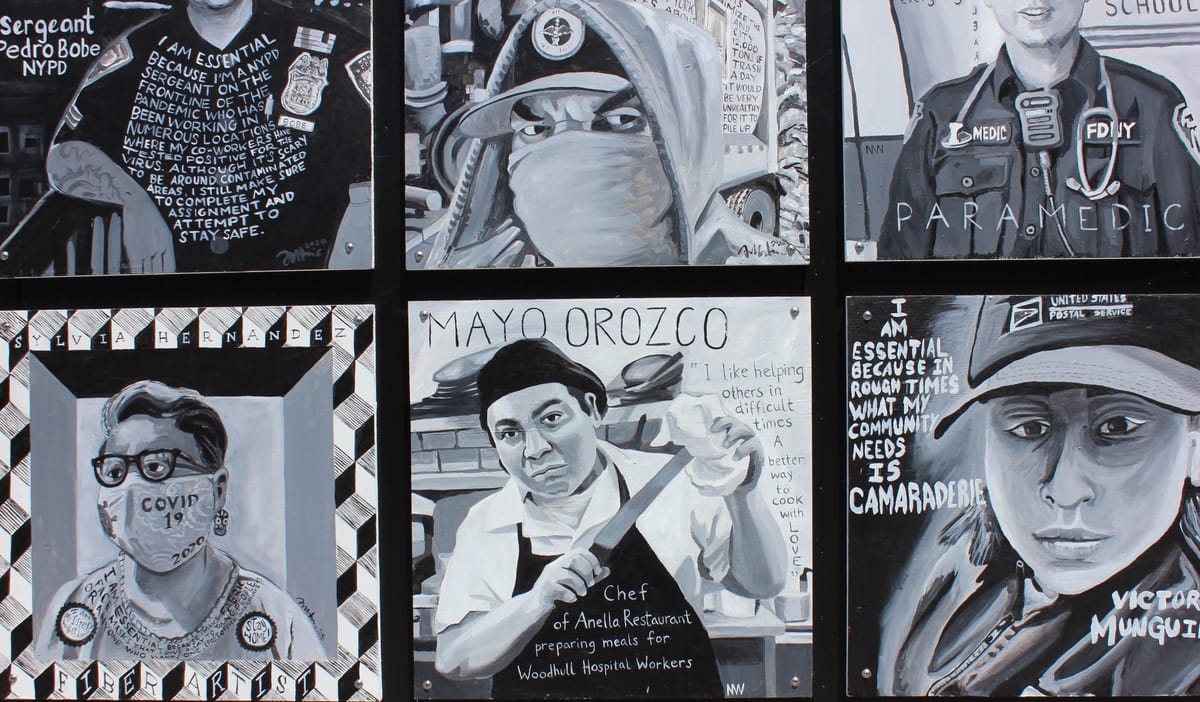
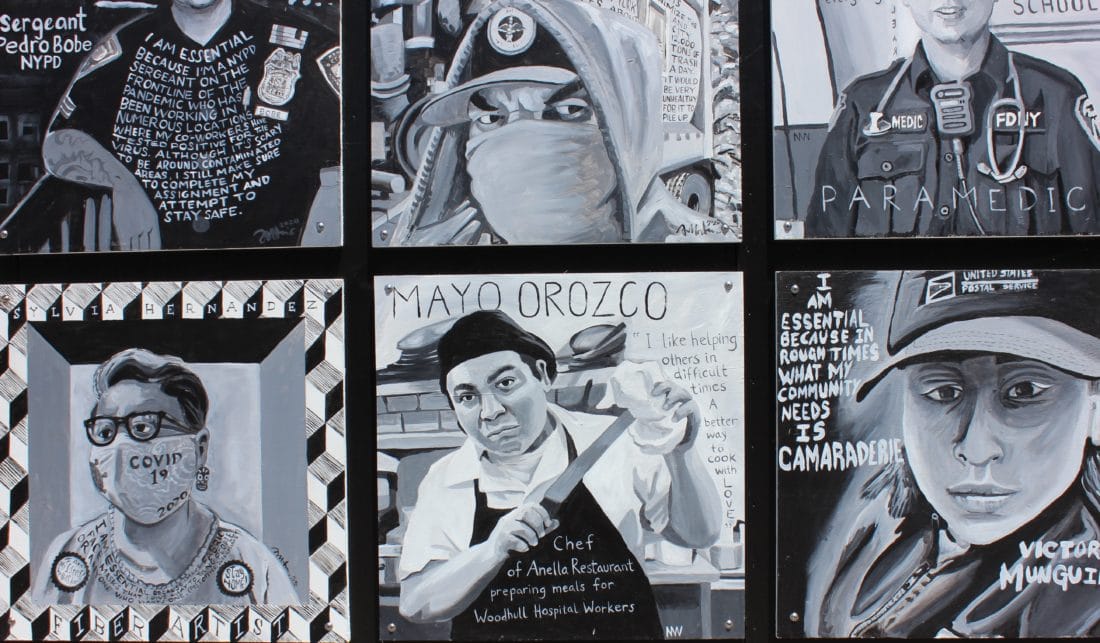
Two new murals in Williamsburg – one at the event space 74Wythe, the other right inside the South 4th Street entrance to Domino Park – pay tribute to the people holding New York together.
Just inside the South 4th street entrance to Domino Park, a mural looms in a stark palette of black, white, and gray – a grid made up of 72 drawings, featuring the faces, and words, of essential workers – official and unofficial — across Brooklyn. The mural is a project by art collective Los Muralistas de El Puente, which creates community murals and mentors youth and community members in mural-making and other forms of art.
Los Muralistas’ founder and director, Joe Matunis, left the definition of “essential” intentionally broad.
“We talked about this idea of essential workers, like “wait a minute, everybody’s essential, whether you’re at home with your kids and your neighbors, or you’re going off and working in a supermarket or driving an ambulance.” All the individuals have a personal connection to the artists, whether they’re a friend or family member, or somebody who lives and works in the community.
Matunis said that he chose the color scheme partially out of budget and time restrictions, but he was also inspired, somewhat, by a project he completed as a graduate student in the 1980s. He used black house paint, the effect of which was “really kind of powerful,” he said. The mural was constructed of removable panels, which, Matunis said, will eventually be taken down and auctioned off to raise money for El Puente, and to pay the artists, many of whom have lost work during the pandemic.
Over the last decade, Matunis said, he’s tried to use Los Muralistas’ platform to address issues that threaten the Latinx community’s way of life — like gentrification. Art is a way of documenting, and promoting, the lives and history of the community’s longtime residents, he said. “What are the cultural expressions, what are the stories of the people from this neighborhood? It’s a way of putting those stories out there so the community’s not invisible.”
Because of that, Matunis knew that the mural had to be a collaborative effort. The mural features the work of 10 different artists, including Maurilio Tendilla, Nadia Westcott, and Matunis himself. All of them come from different Brooklyn neighborhoods, and all tell their own stories.
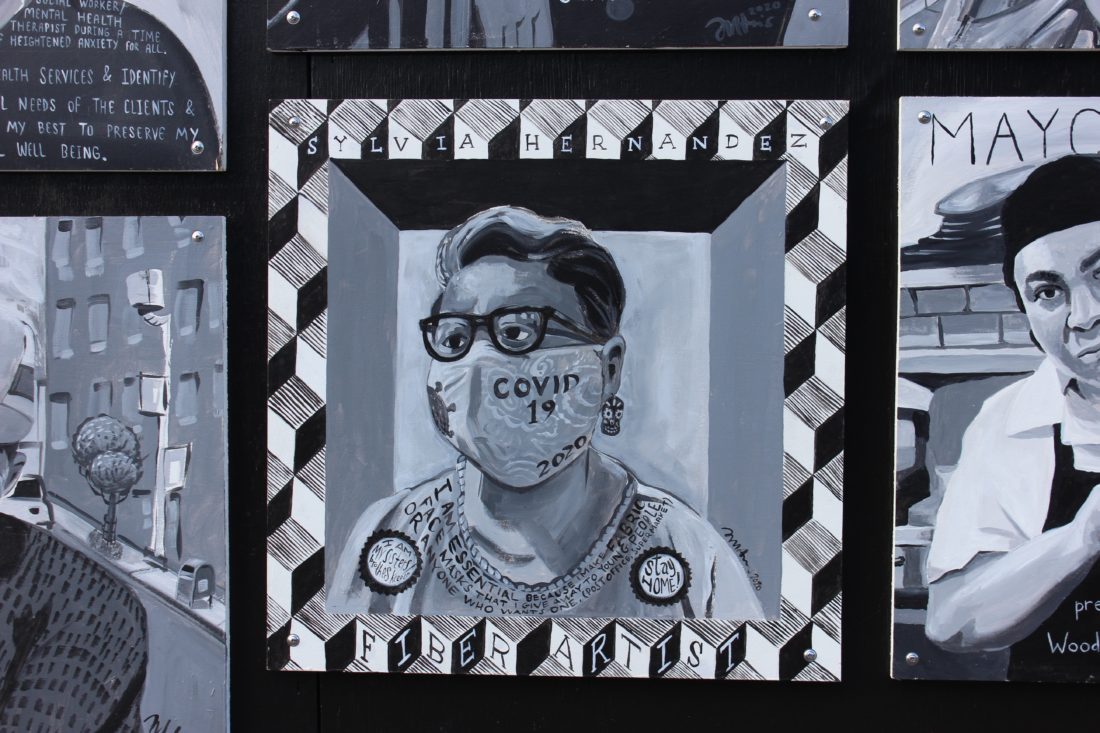
Many of the faces filling the mural wall belong to people of color. This is partly because the city’s essential workers –like people who work at hospitals or in service jobs – are mostly people of color. Matunis said that he tried to include as many of these workers as possible. And partly because the vast majority of the people who responded to his calls for artists to participate in the mural, as well as several of the artists who contributed to the mural, are Latinx.
Christopher Guerra, a Mexican American artist and a member of the collective, contributed around nine different portraits. One of his favorites is of a mailman named Juan, a Mexican immigrant, who is also Guerra’s stepfather. Juan is the family’s only source of income – Guerra’s mother suffers from seizures, and his brothers are still in school. Adding to the risk his stepfather faces as a diabetic, Guerra said, is the fact that many of the people his father interacts with don’t take the virus seriously.
“Some of them wear masks and some of them don’t. It was that big risk, you know?”
Guerra hopes his work will have an impact on the people who see it. “I want them to realize that they’re not alone. There’s other people out there that are afraid.”
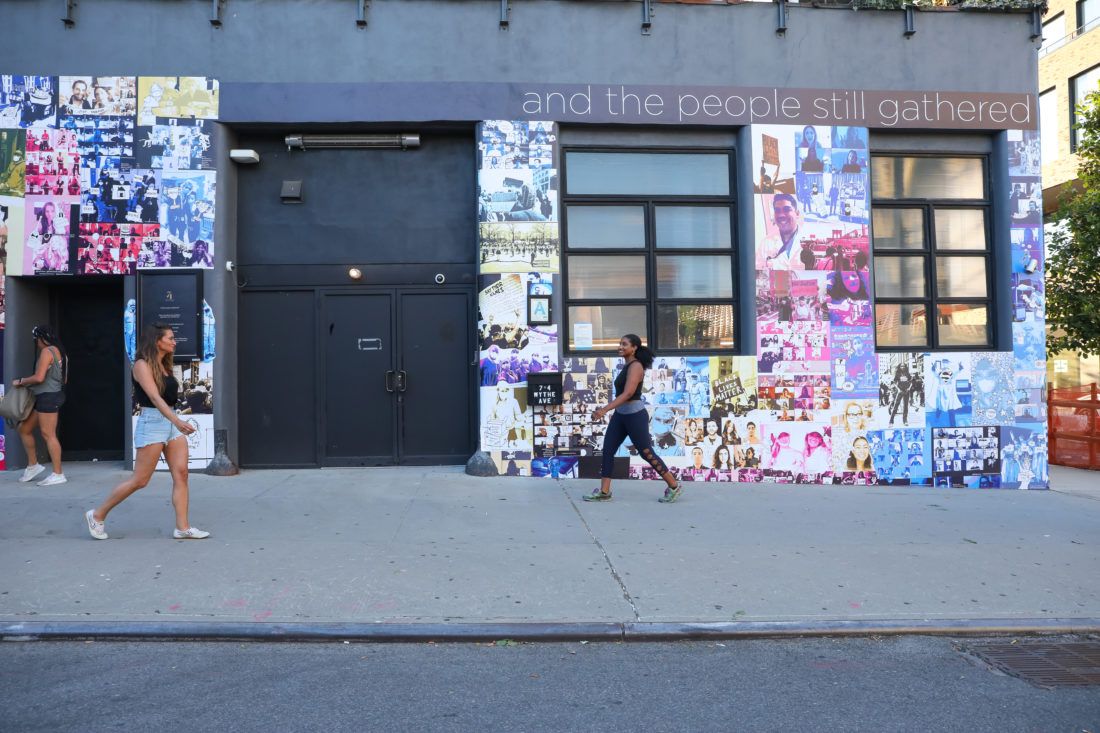
74Wythe, whose slated opening this summer was postponed due to COVID-19, recently revealed a 15,000 square foot mural that spans the length of its North 12th street brick facade and features a collage of around 100 blown-up photographs. Searchable on social media with the hashtag #74wythefamiliarfaces, the installation features a mosaic of images, ranging from Black Lives Matter protestors to brides and grooms getting married on Zoom.
The 74Wythe team, the project’s art director Angela Redai said, had wanted to give back to their community, and to recognize their hard work during this time. “We can’t do this alone. We have to come together to do virtually anything. It takes a village, it takes a city.”
“The installation is an exploration of how people have gathered in 2020 when we haven’t really physically been able to gather in traditional ways,” Redai explained. “And, also, how gathering in each of these small ways can create momentous impact and momentous change.”
The installation also places a particular emphasis on people from 74Wythe’s events and hospitality community, Redai said, many of whom have donated time and resources even while their businesses were “essentially shuttered.” These include catering companies donating food to hospitals and event planners offering free consultations to brides conducting virtual weddings.
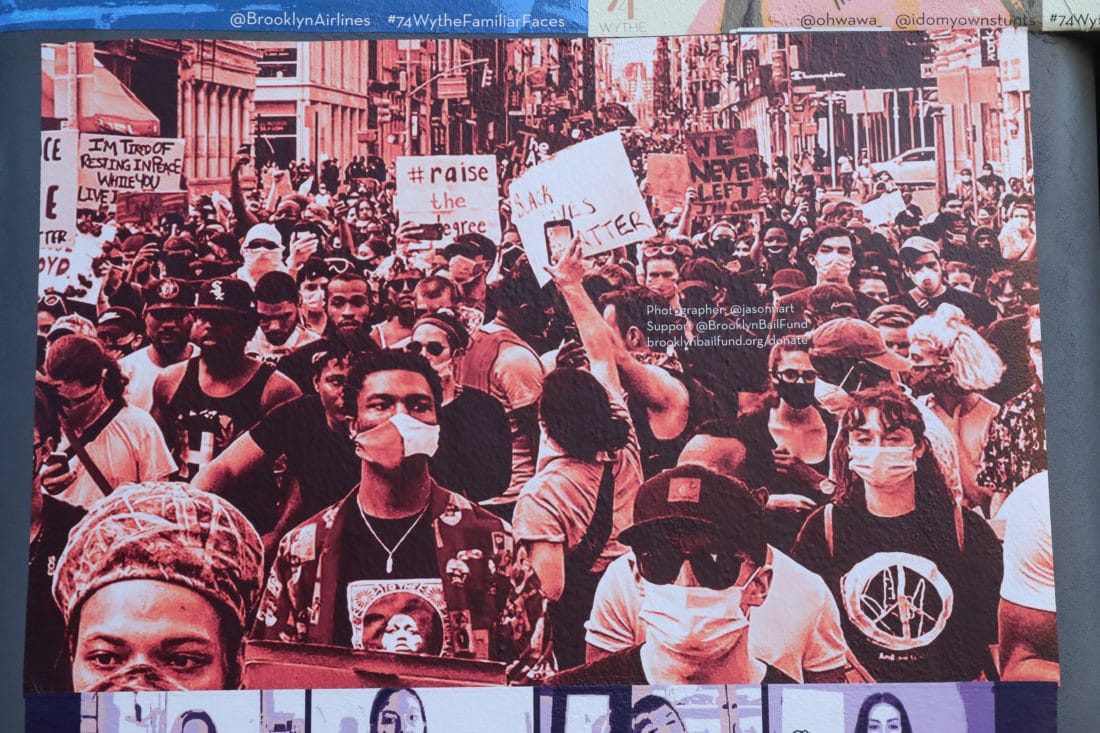
That work also extends to the Black Lives Matter movement, Redai emphasized. Whether people have protested or signed petitions or drawn attention to the movement on social media, supporters of the movement took concrete steps toward making change and creating a just society.
All photos include the handle or hashtag of the photographer. “We thought it was really important to include that,” Redai said. “We’re in such a time of sharing and reposting, that if you’re reposting something, why shouldn’t it have the George Floyd memorial fund hashtag on it that people can actually take action and donate to?”
The mural is embellished with custom illustrations by artist Arianna Margulis of @butlikemaybe, who says she was happy to bring a sense of humor and levity to the installation. “I think it’s tough, because you want to be respectful, but also – people need to smile and live,” she told us.
The installation was produced with the help of signage company 40visuals, and will remain at 74Wythe at least until the end of the summer, at which point they’ll assess whether to keep it there longer.
A previous version of this article incorrectly stated Christopher Guerra’s last name as Guerro.




